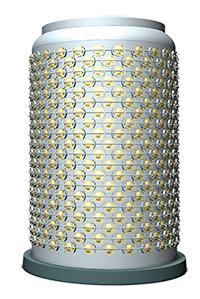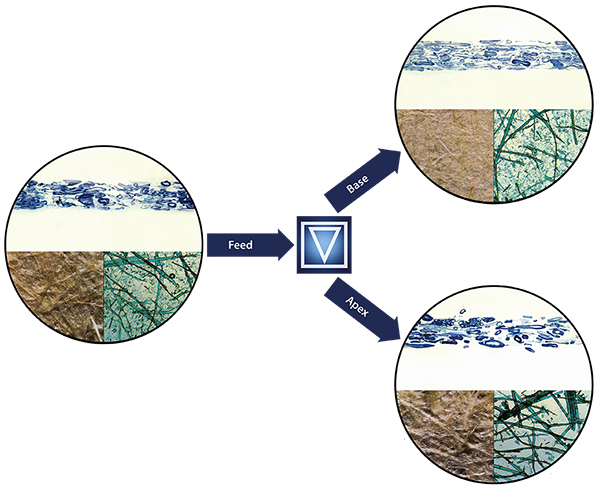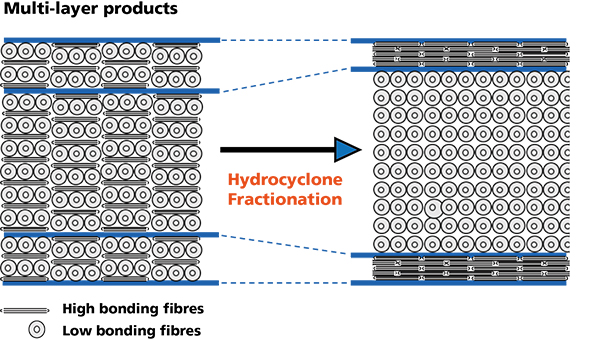What is Hydrocyclone Fractionation?
 What all pulps have in common is a variation of fiber length, cross-section, diameter, and wall thickness. There are also variations in the degree of fibrillation of the fiber.
What all pulps have in common is a variation of fiber length, cross-section, diameter, and wall thickness. There are also variations in the degree of fibrillation of the fiber.
Hydrocyclone fractionation is a process used to separate fibers according to density, cross-section, and degree of fibrillation.
The fractions obtained contain fibers with a higher degree of homogeneity. A furnish can, by hydrocyclone fractionation, either be divided into two or more pulps suitable for different and improved end-products, or it can be developed into a more homogeneous pulp with improved papermaking quality.
Hydrocyclone fractionation with RadicloneTM AM80 hydrocycloning system
Kadant Noss developed an efficient fractionation process using its well- established Radiclone AM80 hydrocycloning system providing tailor-made solutions for different types of pulp.
The hydrocyclones used for fiber fractionation are specially developed to separate the fibers according to specific gravity and specific surface.
Low specific gravity, high specific surface fibers with good bonding and surface properties are concentrated in the base of the hydrocyclone while thick-walled fibers with high specific gravity and low specific surface are concentrated in the apex of the hydrocyclone.
 Different fractions achieved by hydrocylcone fractionation with the Kadant Noss Radiclone AM80 hydrocycloning system.
Different fractions achieved by hydrocylcone fractionation with the Kadant Noss Radiclone AM80 hydrocycloning system.
Different fibers are suitable for different products
By using fibers in an optimal way, hydrocyclone fractionation enhances the potential of original pulps and increases profits. Fibers with equal properties are extracted from an original pulp and forwarded separately for specific products or layers in products.
Right type of fiber in the right type of product
With hydrocyclone fractionation, all fiber types can have a higher value. Two fractions used one by one can have a higher value than the original pulp alone.
Smart multi-layer products
Hydrocyclone fractionation is also used in multi-layer products where bulky fibers are separated for use in the middle layer and the thin-walled, easily collapsible fibers for the outer layers, which in total improves surface smoothness and the board stiffness. This solution is used by a well-known Swedish manufacturer who is using the technique in two board mills to improve linerboard quality and productivity.
 Split of fibers according to their properties in order to achieve an ideal I-beam structure for an optimal bending stiffness.
Split of fibers according to their properties in order to achieve an ideal I-beam structure for an optimal bending stiffness.